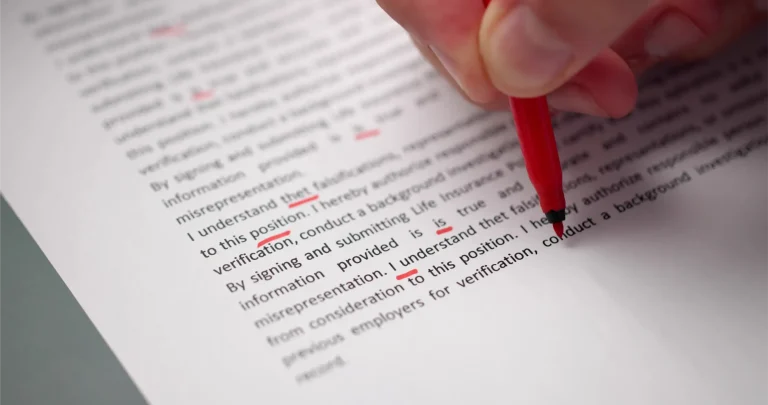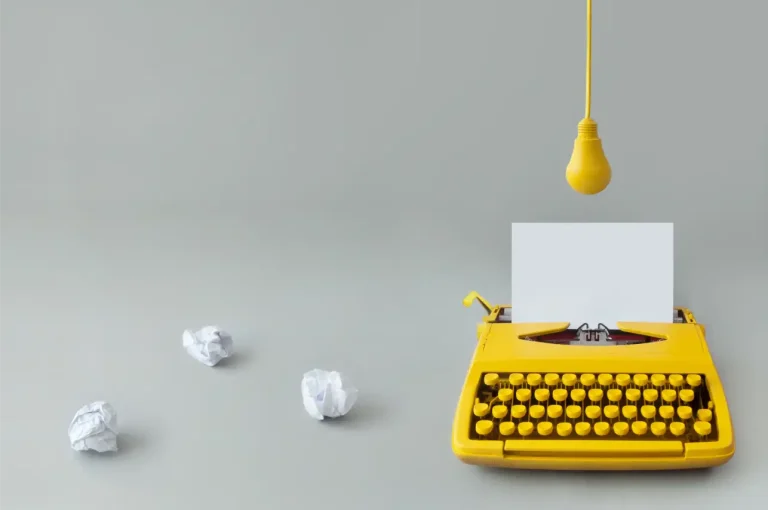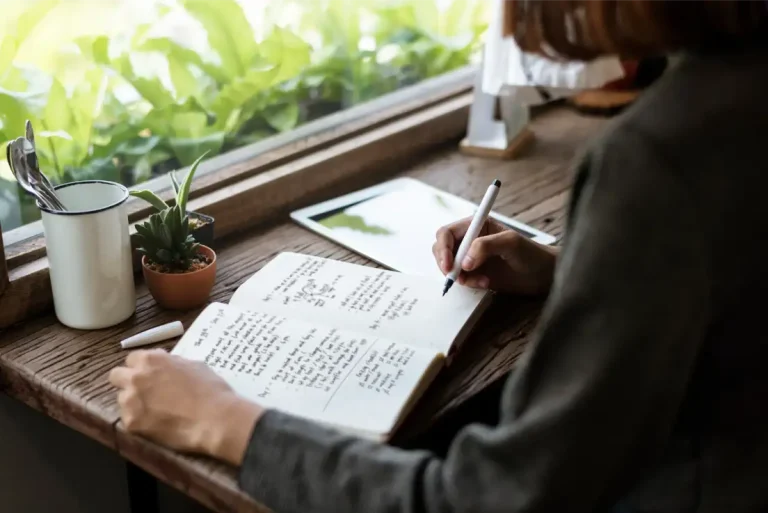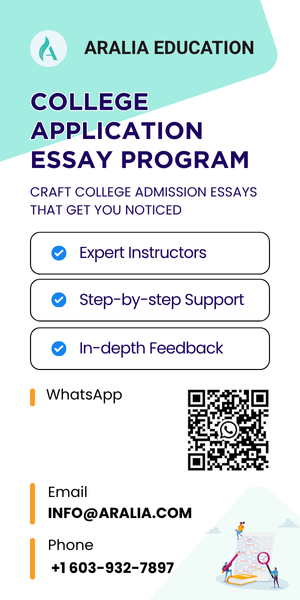1. What is The Scholastic Art & Writing Awards
The Scholastic Art and Writing Awards is the longest-running, oldest, and most prestigious literary and art competition in the United States, aiming to find creative works by students in grades 7-12. Since 1923, the Academic Art and Writing Awards is the program for creative teens and recognize young people’s visions, originality, and talent. It has provided opportunities and academic awards for creative young people to express their talent. The high school award is a symbol of the pursuit of excellence, and can help students stand out in university and scholarship applications.
Every year, in about 28 art and writing categories, teenagers in grades 7-12 submit more than 330,000 works of art and writing. The judging panel is composed of academic professionals in these fields. They evaluate and select award recipients on both regional and national levels.
When are Scholastic Art and Writing Awards due?
Competition Timeline: September – December 2024
The Scholastic Art and Writing Awards open for entries in September, with deadlines varying by region. Some regions may have deadlines as early as December 1, while others may have later submission dates in January. More information about state deadlines is available below.
2. What are the eligibility requirements of the Scholastic Art & Writing Awards?
Students in grades 7–12, age 13 years or older who reside in the United States, U.S. territories, U.S. Military bases, or Canada can enter the 2023 Scholastic Art Writing. International students are also encouraged to apply.
Available Categories for the Scholastic Art and Writing Awards
Art Categories: Architecture & Industrial Design, Ceramics & Glass, Comic Art, Design, Digital Art, Drawing & Illustration, Editorial Cartoon, Expanded Projects Fashion, Film & Animation, Jewelry, Mixed Media, Painting, Photography, Printmaking, Sculpture, Art Portfolio (graduating seniors)
Writing Categories: Critical Essay, Dramatic Script, Flash Fiction, Journalism, Humor, Novel Writing, Personal Essay & Memoir, Poetry, Science Fiction & Fantasy, Short Story, Writing Portfolio (graduating seniors)
Website: https://www.artandwriting.org/
How to submit to the Scholastic Art and Writing Awards?
To submit to the Scholastic Art and Writing Awards, follow these steps:
- Create Your Account: Begin by setting up an account in the awards portal. Students and educators can link their accounts to a school or educational program to join a vibrant community of young artists and writers.
- Upload Your Work: After creating your account, upload your artwork as digital images. It’s essential to choose high-quality images that truly represent your inspiration. You can seek guidance from educators, family, and friends when deciding which works to enter and select the category that best fits your piece.
- Pay for Your Entry: The entry fees are $10 for individual entries and $30 for portfolios. If the fees pose a barrier, you can select the “fee waiver” option during the submission process.
Remember that the Scholastic Awards open for entries in September, and deadlines vary by region, so be sure to check your specific regional deadline.
Scholastic Art and Writing Regional Deadlines
| State | Writing Category | Art Category |
|---|---|---|
| Alabama | 2024/12/10 | 2024/12/10 |
| Alaska | 2024/12/5 | 2024/12/22 |
| Arizona | 2024/12/5 | 2024/12/5 |
| Arkansas | 2024/12/5 | 2024/12/13 |
| California | 2024/12/2 | 2023/12/2 |
| Colorado | 2024/12/5 | 2025/1/7 |
| Connecticut | 2024/12/5 | 2024/12/11 |
| Delaware | 2024/12/2 | 2024/12/1 |
| Florida | 2024/12/5 | 2024/12/1 |
| Georgia | 2024/12/16 | 2024/12/16 |
| Hawaii | 2024/12/5 | 2024/12/15 |
| Idaho | 2024/12/12 | 2024/12/12 |
| Illinois | 2024/12/11 | 2024/12/11 |
| Indiana | 2024/12/09 | 2024/12/09 |
| Iowa | 2024/12/9 | 2024/12/9 |
| Kansas | 2025/1/6 | 2025/1/6 |
| Kentucky | 2024/12/1 | 2024/12/1 |
| Louisiana | 2024/12/5 | 2024/12/5 |
| Maine | 2024/12/5 | 2024/12/15 |
| Massachusetts | 2024/12/6 | 2024/12/13 |
| Michigan | 2024/12/9 | 2024/12/13 |
| Minnesota | 2024/12/12 | 2024/12/13 |
| Mississippi | 2024/12/31 | 2024/12/01 |
| Missouri | 2025/01/06 | 2025/01/06 |
| Montana | 2024/12/5 | 2024/12/5 |
| Nebraska | 2024/12/1 | 2024/12/27 |
| Nevada | 2024/12/5 | 2024/12/5 |
| New Hampshire | 2024/12/15 | 2024/12/13 |
| New Jersey | 2024/12/12 | 2024/12/12 |
| New Mexico | 2024/12/5 | 2024/12/13 |
| New York | 2024/12/10 | 2024/12/10 |
| North Caroline | 2024/12/5 | 2024/12/13 |
| North Dakota | 2024/12/15 | 2024/12/15 |
| Ohio | 2024/12/1 | 2024/12/1 |
| Oklahoma | 2024/12/5 | 2024/12/5 |
| Oregon | 2024/12/5 | 2024/12/5 |
| Pennsylvania | 2024/12/2 | 2024/12/1 |
| Rhode Island | 2024/12/5 | 2024/12/5 |
| South Carolina | 2024/12/16 | 2024/12/16 |
| South Dakota | 2024/12/18 | 2024/12/1 |
| Tennessee | 2024/12/5 | 2024/12/21 |
| Texas | 2024/12/5 | 2024/12/13 |
| Utah | 2024/12/5 | 2024/12/5 |
| Vermont | 2024/12/16 | 2024/12/16 |
| Virginia | 2024/12/5 | 2024/12/15 |
| Washington | 2024/12/5 | 2024/12/5 |
| West Virginia | 2024/12/5 | 2024/12/5 |
| Wisconsin | 2024/12/1 | 2024/12/16 |
| Wyoming | 2024/12/5 | 2024/12/5 |
| Washington, DC | 2024/12/15 | 2024/12/5 |
| Canada | 2024/12/5 | 2024/12/5 |
Submission Deadlines for popular regions
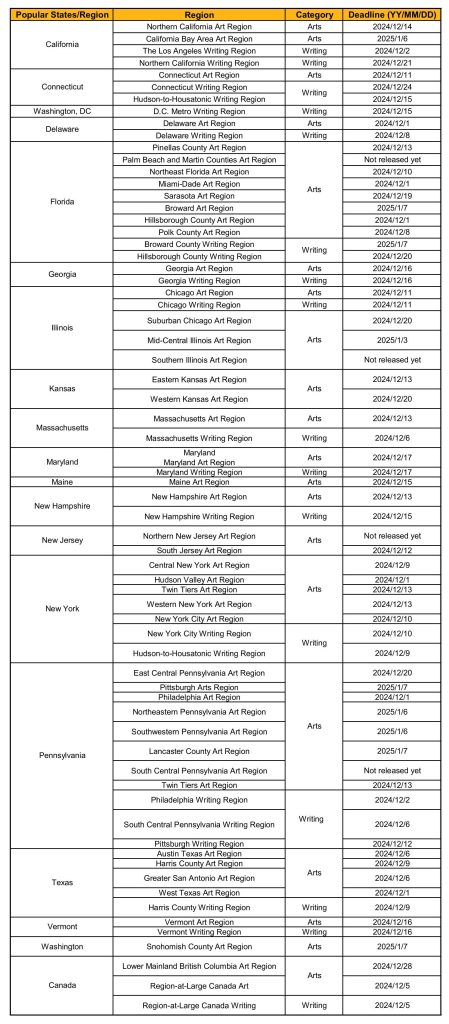
4. Selection Process
In evaluating work, jurors look for pieces that align with and exemplify three core values: originality, technical skills, and personal voice/vision.
Originality: Works that break away from convention, blur the boundaries between genres, and challenge notions of how a particular concept or emotion can be expressed.
Technical Skills: Works that show practiced techniques and abilities to enhance and skillfully express a particular perspective or vision with clear intention and execution.
Personal Voice or Vision: Works that communicate an authentic and unique point of view.
How prestigious is the Scholastic Art and Writing Awards?
The Scholastic Art & Writing Awards are highly prestigious, reflecting their significant impact on young artists and writers across North America. In the centennial program year alone, the Awards received over 300,000 submissions from more than 100,000 students spanning every state in the U.S., as well as U.S. territories and Canada. Winning a Scholastic Award provides local and national recognition and opens doors for students to further their creative pursuits and develop their talents in a supportive environment.
How to view past winning submissions from the Scholastic Art and Writing Awards
To view past winning submissions from the Scholastic Art and Writing Awards, you can visit the Scholastic Awards Gallery. This online platform showcases award-winning works from various categories, allowing you to explore and appreciate the creativity and talent of previous participants. The gallery is regularly updated, featuring works from both national and regional winners.
Who judges the Scholastic Art and Writing Awards?
The contest is judged by a diverse panel of esteemed visual and literary arts leaders, including many notable alumni. Judging is conducted anonymously, ensuring the selection process is free from bias regarding the student’s gender, age, ethnicity, or hometown. Prominent jurors have included figures such as Judy Blume, Langston Hughes, Ocean Vuong, and Nikki Giovanni, among others. For more details, you can visit their official site.
5. How can I stand out in my application to the Scholastic Art and Writing Awards?
Depending on your personal and professional interests, you can choose to participate in either one or two categories. Thanks to Aralia tutors’ years of experience guiding students through the submission process, our students have gained significant results: 10 Gold Key Awards, 8 Silver Key Awards, and 20 Honorable Mention Awards — a total of 38 awards for the year 2021. We have gathered some suggestions and tips for interested students:
Check out resources provided by Scholastic Art and Writing Awards
Be original
One of the core values mentioned in the judging criteria is originality, meaning that although your work can be inspired by other things, in order to stand out, it needs to come from your own experience and imagination. Make sure to give yourself adequate time to develop your ideas and make sure they truly express your personal values and vision.
Another thing you should keep in mind is plagiarism and copyright. The work students submit must be different from what others have created, and not be copied from other original work. For students submitting in the writing category, take advantage of Turnitin or Grammarly to double-check for accidental plagiarism. In addition, regardless of the category, always cite your sources.
Prepare your technical skills
ART
Professional artists utilize a robust set of technical skills to clearly and effectively express their message to their audience. When creating art for this competition, it is essential to understand and utilize the following ideas:
- A clear subject matter and intention of the piece: Choosing a subject matter that can best express the intention behind your art piece is critical to give your work meaning. Your subject matter is the way that you decide to express yourself, and your intent is why you make that choice.
- Techniques used to communicate your subject and intention: Your technique is your use of the principles of art to convey meaning to your audience. Therefore, it is critical to understand and choose proper techniques to properly communicate your intentions. Your use of value, color, and composition will give you the tools to express yourself through your art. For example, a variety of line weights and light contours give your drawing more dimension and depth. Proportion in drawing and painting is also a problem for beginners since they couldn’t find proportions and see angles in painting at the beginning. Background and foreground are other essential elements students need to put in perspective while drawing a realistic painting. Students should understand why and how to highlight objects in the foreground and adjust color for the background.
- Materials used in conjunction with technique: This is the medium that you choose to manifest your intention. Different materials can lend themselves to unique and personal expressions of meaning. Hence, picking a medium that you genuinely understand, so that you can best utilize different techniques to clearly express yourself is essential. One example can be choosing what kind of paper and color will match. You can use gouache paint on regular paper, but the ideal type is watercolor or thick drawing paper. In addition, mastering the rule of composition is a subtle yet impactful aspect of capturing the audience’s attention. If your style is human figures, faces, and postures, you must also learn and understand what the human body comprises and how to create a proportionate structure on drawing human figures.
WRITING
The skills that differentiate a great writer from a mediocre writer, regardless of whether the writing is fiction or nonfiction, lie in their research, planning, and editing.
- Before even starting to write an essay or work of fiction, students must do proper research to understand their target audience and topic. Researching allows students to find essential information and sources to back up their claims or give their writing an informed and realistic context or background.
- In addition to research, planning is essential to help students maintain a logical flow of ideas or events, and stay true to the overarching arguments or themes of their piece. A good piece of writing clearly communicates its ideas and purpose to readers, whether through a logical and evidence-based essay, or an emotional and experiential work of fiction. A common set of mistakes that writers often make are either lacking an overall message for their writing or losing track of that idea in the process and forgetting to clearly tie everything back to that message. Having a clear plan and outline for your writing will help you to avoid these mistakes!
- A crucial part of writing is editing. The amount of effort you put into editing will be obvious to your readers. From simpler things like checking grammatical errors to fixing writing tone, editing helps you look at your writing from a different perspective and see how well your overall structure and content express your message.
Authentic voice/vision
Artists sometimes struggle with finding their unique voice in the world of art and writing. Your voice may seem like an esoteric and ethereal thing, but it is actually a combination of experience, method, and inspiration. As such, finding your voice is not an instantaneous process, but instead takes time and work in order to refine and define. For newer writers and artists, here are some key ideas that may help you to develop your artistic voice:
The most important step to discovering one’s voice begins with the practice of self-reflection and self-discovery. Make sure that you understand your preferences and why you make certain choices, both in your art and in your everyday life, as these things are most often inextricably linked. As you become more aware of who you are, you should begin to notice patterns in your preferences and behavior. Recognizing these patterns will help you start to understand your overarching motivations and values, which can in turn inform the unique messages you can convey through your art.
In addition to general self-reflection, you should also take special note of the things in your life that make you want to take action. Often, these things are tied to causes that you’re deeply passionate about. By learning about your motivations for these passions and why they’re so important to you, you’ll give yourself essential tools for creating authentic and meaningful art.
Another crucial practice is exploration. Trying different methods, mediums, etc. will help you find the ones that you like best and that align with your passions. A good way to start your exploration process is to find artists that you admire, and try copying the elements of their style that you like most. Obviously, trying to perfectly copy someone else isn’t helpful, but analyzing the specific bits and pieces that stand out to you, and then incorporating those into your work will help you gain skill and form your own techniques from what you learn.
Even when an artist has found and thoroughly developed their creative voice, they will still have to face failure. Therefore, especially as a young artist, it is necessary to see failure as its own essential piece in the expression of your voice. When we choose to learn from failure, and use it as motivation to improve, it’s only then that we can express ourselves with true authenticity. Failure is part of the creative process; it’s a stop on a journey rather than the end of the road. So, approach failure with confidence and a desire to learn, and you’ll never really fail.
If you’re having some trouble embarking on the path of self-discovery, here are some questions to ask yourself that can help:
- What do you love?
- What do you most enjoy doing in your free time?
- What subjects do you love learning about?
- How do you normally express your emotions?
- What does the world need more of?
ART:
- Who are your favorite artists and why?
- What are the themes of your favorite artwork?
- Which of your personal works is your favorite and why?
- What qualities do you love about the art that you’ve personally created?
What motivates you to create art?
WRITING:
- What kind of books do you read for fun?
- Who are your favorite authors?
- What perspective are your favorite books told in, and why do you think the author made that choice?
- Are the subjects/genres that you enjoy reading the same or different from the ones that you enjoy writing? Why?
- What qualities do you love about your personal writing?
- What is your favorite thing that you’ve personally written?
- What motivates you to write?
With these questions in mind, you are one step closer to understanding who you are, what you’re passionate about, and why. Utilizing this knowledge, you can apply your discoveries to your personal writing/drawing style.
It can be helpful to do something to keep track of your ideas and discoveries about yourself, such as keeping a journal, creating a vision board, or talking with your loved ones to gain another perspective.
Throughout your life, your voice will change and develop as you mature and go through different experiences. “Finding” your voice is really a lifelong process that requires constant revision and improvement on the way to reflect your growing visions and values. The more experience you gain, the more you will be able to refine your personal style, techniques, and the intent you want to express through your art.
5. What are the prizes of the Scholastic Art and Writing Awards?
Students are eligible for many awards, exhibitions, publications, and scholarships.
- Regional Awards include Gold Key, Silver Key, Honorable Mention, American Visions Nominee, and American Voices Nominee Awards.
- Gold Key entries of Regional Awards are considered for the National Awards, including Gold Medals, Silver Medals with Distinction, Silver Medals, and scholarship awards.
- Award-winning students will also have the chance to be featured in the exhibition and publication each year. Students are also eligible for cash awards, academic scholarships of up to $10,000, and tuition-based scholarships that can cover anywhere from a portion to the entirety of tuition costs!
If you’re looking for an opportunity to showcase your unique talents and skills, the Scholastic Art & Writing Awards is a great place to start. With its long history of recognizing excellence in the visual and writing arts, you can be sure that your work will be judged fairly and evaluated by experts in the field. You’ll gain valuable experience while showing off your skills to the world. It’s an opportunity not to be missed!
When are Scholastic Art and Writing Awards announced?
The Scholastic Art and Writing Awards have a specific timeline for announcing results:
- Regional Awards are announced on the portal at the end of March. However, some Regional Programs may choose to announce their results earlier.
- National Awards are announced in June.
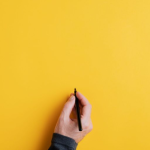
• Students will work directly with both literary and media texts as they plan and write their own.
• Through the rigorous process of planning, writing, work- shopping, re-shaping and work-shopping again, students will refine their skills in reading, writing, speaking and listening.
• Their final portfolios will be a catalog of imaginative, thoughtful work. In addition to Scholastic, and with the guidance of their teacher, students will be encouraged to source their own competitions and publications for further submission and publishing opportunities.
• Scholastic National Silver Award Instructor, Previous Scholastic Writing Contest Judge, Multiple Competition Award-Winning Coach, Top Public University Writing Professor with a Juris Doctor degree.






